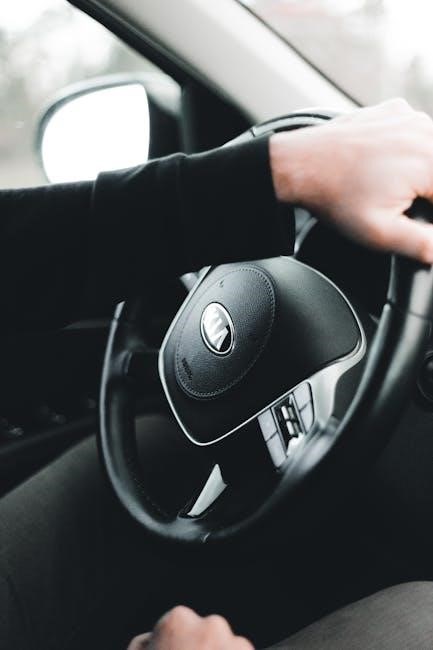Engaging 4 wheel drive manual requires knowledge of vehicle systems and procedures to ensure safe operation, using
- steps and owner’s manual guidelines for proper engagement and disengagement methods always.
Understanding the Importance of 4 Wheel Drive
Understanding the importance of 4 wheel drive is crucial for vehicle owners, as it provides improved traction and control on various terrain and weather conditions, enhancing overall safety and driving experience. The 4 wheel drive system allows all four wheels to receive power from the engine, reducing the risk of wheelspin and loss of control. This is particularly useful in situations where extra grip is necessary, such as driving on slippery or uneven surfaces. By engaging 4 wheel drive, drivers can maintain control and stability, reducing the risk of accidents and damage to the vehicle. Additionally, 4 wheel drive can improve towing capacity and overall vehicle performance, making it an essential feature for those who frequently drive in challenging conditions. With proper understanding and use of 4 wheel drive, drivers can optimize their vehicle’s capabilities and ensure a safe and enjoyable driving experience.

Preparation for Engaging 4 Wheel Drive
Preparation involves checking vehicle systems and surroundings, using
- lists to ensure proper engagement and safety procedures are followed always and correctly every time.
Locating the 4WD Control
To engage 4 wheel drive, it is essential to locate the 4WD control, which is usually found on the center console or on the dashboard, and is often labeled as 4H or 4L, depending on the vehicle model.
The 4WD control can be a lever, button, or switch, and its location may vary depending on the make and model of the vehicle, so it is crucial to consult the owner’s manual for specific instructions.
Some vehicles may have an electronic 4WD control, which can be activated using a button or switch, while others may have a manual lever that needs to be pulled or pushed to engage 4 wheel drive.
Regardless of the type of 4WD control, it is vital to understand its operation and location to ensure safe and proper engagement of 4 wheel drive, and to avoid any potential damage to the vehicle’s drivetrain.
By locating the 4WD control and understanding its operation, drivers can confidently engage 4 wheel drive and navigate challenging terrain with ease and control, using the correct procedures and guidelines.

Steps to Engage 4 Wheel Drive
Engage 4 wheel drive using specific
- steps
outlined in the vehicle’s manual for safe operation always.
Bringing the Vehicle to a Complete Stop
To engage 4 wheel drive, it is essential to bring the vehicle to a complete stop, ensuring the transmission is in neutral and the parking brake is applied if necessary. This step is crucial as it allows the vehicle’s systems to transition smoothly into 4 wheel drive mode. The driver should check the surrounding area to ensure it is safe to stop and engage 4 wheel drive. By coming to a complete stop, the driver can avoid damaging the vehicle’s drivetrain and ensure a safe transition into 4 wheel drive. The vehicle’s owner’s manual should be consulted for specific instructions on bringing the vehicle to a complete stop and engaging 4 wheel drive. Additionally, the driver should be aware of the vehicle’s surroundings and any potential hazards before engaging 4 wheel drive. This step is critical in the process of engaging 4 wheel drive manually.
Shifting the Transfer Case Lever
Shifting the transfer case lever is a critical step in engaging 4 wheel drive manually, and it requires careful attention to the vehicle’s systems and controls. The driver must locate the transfer case lever, typically found on the center console or near the gearshift, and move it to the desired position, such as 4H or 4L. The lever may have different positions for different driving modes, and the driver should consult the owner’s manual to ensure they are selecting the correct mode. The transfer case lever controls the flow of power to the wheels, and shifting it correctly is essential for safe and effective operation of the 4 wheel drive system. By shifting the transfer case lever, the driver can engage the 4 wheel drive system and prepare the vehicle for driving in challenging conditions. The lever’s position and movement are critical to the engagement process.

Engaging 4 Wheel Drive for Different Conditions
Using the correct mode for various conditions, such as snow or mud, is essential for safe operation, using specific
- settings and guidelines always.
Using 4 Wheel Drive on Slippery Conditions
When driving on slippery conditions, such as ice or snow, engaging 4 wheel drive can provide extra traction and control, using the vehicle’s systems to distribute power to all four wheels. This can help to improve stability and reduce the risk of skidding or losing control. It is essential to follow the manufacturer’s guidelines for engaging 4 wheel drive in these conditions, as improper use can lead to damage to the vehicle’s systems. The owner’s manual will provide specific instructions for engaging 4 wheel drive on slippery conditions, and it is crucial to follow these guidelines to ensure safe and effective operation. By using 4 wheel drive in slippery conditions, drivers can improve their safety on the road and reduce the risk of accidents. The correct use of 4 wheel drive in these conditions requires a good understanding of the vehicle’s systems and capabilities.
Engaging 4 Wheel Drive for Rough Terrain
Engaging 4 wheel drive for rough terrain, such as rocky or muddy roads, can provide the necessary traction and control to navigate these conditions safely. The vehicle’s 4 wheel drive system can help to distribute power to all four wheels, improving stability and reducing the risk of getting stuck. When driving on rough terrain, it is essential to use the correct gear and speed to maintain control and avoid damaging the vehicle’s systems. The owner’s manual will provide specific guidelines for engaging 4 wheel drive in these conditions, and it is crucial to follow these guidelines to ensure safe and effective operation. By using 4 wheel drive in rough terrain, drivers can improve their ability to navigate challenging roads and reduce the risk of accidents or damage to the vehicle. Proper use of 4 wheel drive in rough terrain requires a good understanding of the vehicle’s capabilities and limitations.

Best Practices for Engaging 4 Wheel Drive
Following owner’s manual guidelines and proper procedures ensures safe and effective 4 wheel drive engagement, reducing risk of damage to vehicle systems and components always using correct methods.
Referencing the Owner’s Manual
To ensure proper engagement of 4 wheel drive, it is essential to reference the owner’s manual for specific instructions and guidelines. The manual provides detailed information on the location of the 4WD control, the steps to engage and disengage the system, and any specific requirements or recommendations for the vehicle. By following the instructions outlined in the manual, drivers can avoid damaging the vehicle’s systems and ensure safe and effective operation. Additionally, the manual may provide information on troubleshooting common issues and maintenance requirements for the 4 wheel drive system. It is crucial to read and understand the manual before attempting to engage the 4 wheel drive to avoid any potential problems or damage to the vehicle. The owner’s manual is a valuable resource that can help drivers get the most out of their vehicle’s 4 wheel drive capability.
Avoiding Damage to Expensive Components
To avoid damaging expensive components when engaging 4 wheel drive, it is crucial to follow proper procedures and guidelines. This includes bringing the vehicle to a complete stop before shifting into 4 wheel drive, as sudden engagement can cause damage to the transfer case and other components. Additionally, drivers should avoid engaging 4 wheel drive while the vehicle is moving, as this can also cause damage to the system. By taking the time to properly engage and disengage the 4 wheel drive system, drivers can help extend the life of their vehicle’s components and avoid costly repairs. Regular maintenance and inspections can also help identify potential issues before they become major problems. By being mindful of the vehicle’s systems and taking steps to avoid damage, drivers can enjoy the benefits of 4 wheel drive while minimizing the risk of expensive repairs. Proper care is essential.